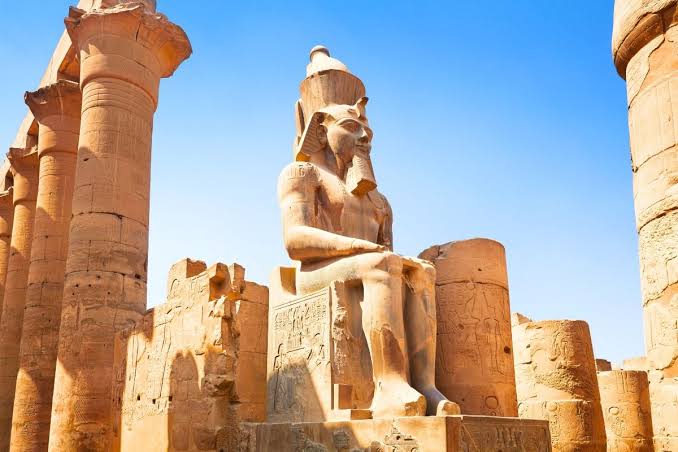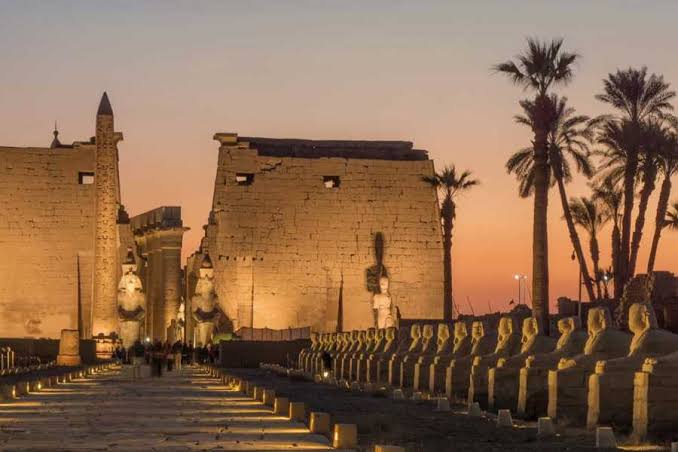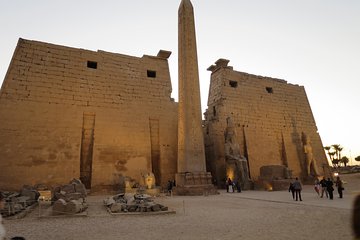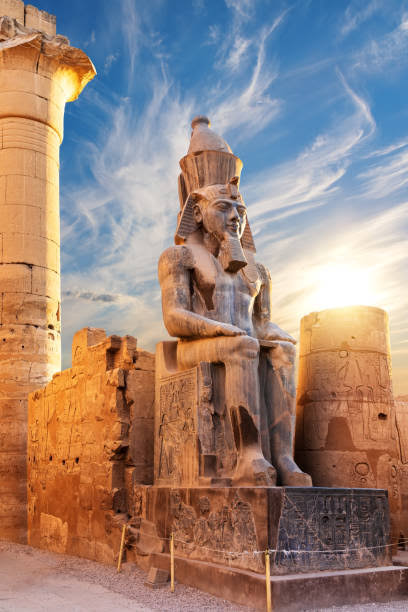




Description
Complete Luxor Tour West Bank: Valley of the Kings, Valley of the Queens, Valley of the Nobles, Hatshepsut Temple, Ramesseum, Colossi of Memnon, Karnak Temple, and Luxor Temple.
HIGHLIGHTS
- Private all-day tour of Luxor’s East and West Bank attractions
- On this unique private tour, receive VIP, tailored attention from your knowledgeable Egyptologist guide.
- The Kings’ Valley
- The Hatshepsut Temple
- The Nobles’ Valley
- The Queens’ Valley
- Ramesseum
- Memnon’s Colossi
- Temple of Karnak
- Temple of Luxor
- Pickup and drop-off from hotels or the port in central Luxor
WHAT YOU CAN EXPECT
Travel to the west bank of the Nile River by minivan after leaving your Luxor hotel or Luxor river port.
As you journey, pay attention to the stories your guide shares about the Valley of the Kings, the royal necropolis carved out of the mountains that formerly housed Thebes’ capital, Luxor. Tell your guide about any special interests you may have.
You can customise your route and commentary to suit your tastes. Enjoy the vistas of the untamed mountains.
Go through the tunnels and chambers that are inside the rock cuts. Although guides are not allowed inside the tombs, they will give you instructions on what to search for before you enter. Explore halls adorned in vibrant hieroglyphics and view painted chambers that formerly held the relics of the pharaohs of ancient Egypt. You can access King Tutankamon’s tomb directly for a fee if you’d like.
Next, take a trip to the Temple of Hatshepsut, which is a vision of cliffside colonnades shaped like geometric shapes. Discover the background of the temple and the life of Egypt’s first female monarch, Queen Hatshepsut. Admire the statues and hieroglyphics that adorn the courtyards and terraces as you go about them.
Proceed to explore the Valley of the Nobles, where the tombs of prominent Egyptians from the New Kingdom, or the Golden Age of Thebes, are strewn among the rocky hills on the West Bank of Luxor at the El Qurna site. Ancient Egyptian culture and religious beliefs may be learned a great deal from these tombs, which are adorned with scenes from daily life, funerals, and the perfect afterlife of their owners. The skill and inventiveness of the ancient Egyptian artisans are also demonstrated by their beauty.
Visit the Valley of the Queens as well. This is the ancient burial site of the wives of the Pharaohs. It was formerly referred to as Ta-Set-Neferu, which means “the place of beauty.
Visit the Ramesseum, King Ramses II’s memorial temple. The statue of Ramses II, which stands 19 metres (62 feet) tall and weighs over a thousand tonnes (of which only pieces remain), is the main attraction of the Ramesseum temple. The walls of the partially surviving Ramesseum temple are adorned with reliefs that portray events from the Syrian wars, the Festival of Amon Min, and the Battle of Kadesh.
Proceed to take pictures at the Colossi of Memnon, which are two enormous statues of Pharaoh Amenhotep III that were formerly part of his now-demolished funeral complex. Examine the Roman-era graffiti etched into the stone and listen about the mythology and stories that surround the statues.
After that, take a drive to East Bank to begin with the Karnak Temples. As you journey, learn that Luxor is located on the site of Thebes, the ancient Egyptian royal city, which dates back 4,000 years, and that Karnak is the largest of its temple complexes. Learn about the development of this enormous complex of structures by over 30 pharaohs, such as Ramses II and Amenhotep IV. When you get there, follow the Avenue of the Sphinxes to the entrance, and then go inside with your Egyptologist guide to explore. Discover the construction process of the massive pylons at the entrance, and be in awe of the courtyards and sanctuaries located beyond. The oldest ruins date back more than 3,000 years; the more into the complex you go, the further back you step.
Admire the magnificent Hypostyle Hall, which is filled with 134 enormous columns that rise above you like a forested area. Raise your head and discover the clever techniques the ancient Egyptians employed to elevate them. After visiting the hallowed lake where pharaonic gifts were cleaned, take some leisurely time to explore the area.
Proceed to the historic Luxor Temple, which is situated parallel to the Nile in the city’s centre. Learn about its construction in approximately 1,400 BC, and the additions made by Alexander the Great, Ramses II, and Tutankhamon. Admire the granite gateway obelisk, whose original counterpart is now located in the Place de la Concorde in Paris, and the two enormous sculptures of Ramses at the entry. After that, enter to marvel at the intricately carved courts, papyrus columns, and inner sanctuaries. Explore the evocative anterooms, which have a chapel to Alexander the Great, who reconstructed the space in his honour.
Your Egyptologist tour guide will provide you with information at each location, and you will have free time to independently explore the historic sites.
Take advantage of the chance to visit an alabaster factory before your tour concludes, and if you’d like, buy some hand-cut pieces as keepsakes. Once you’ve seen all the sights, end the tour by being dropped off at your hotel or cruise ship.
$125,00
Entrance fees are not included in the price of any tours
To provide you more programme flexibility—you can choose to miss one or more places based on your interests—we do not charge site entrance costs in advance.
